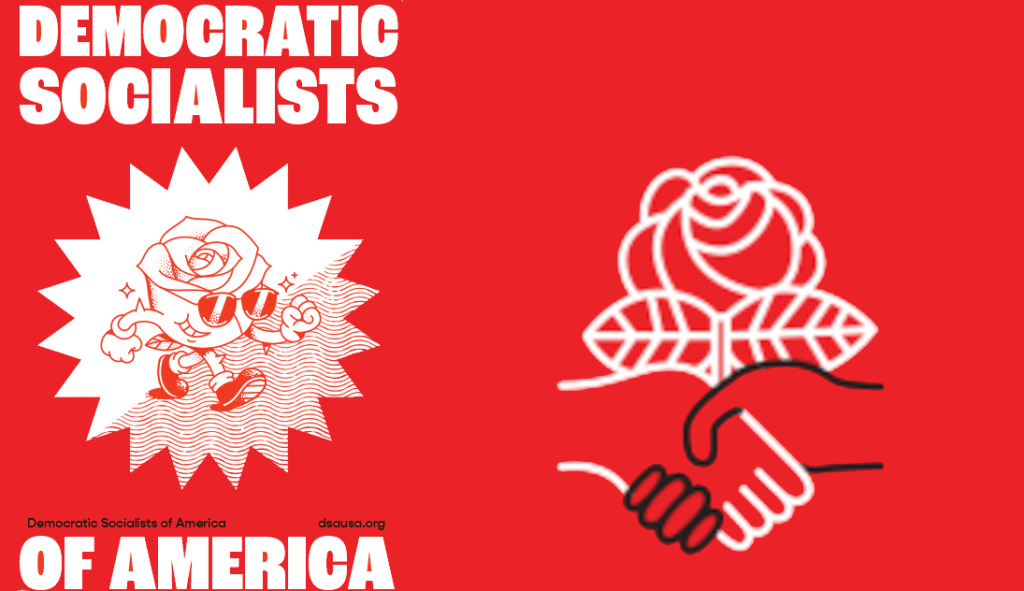The Democratic Socialists of America was established as a political movement in 1982 after several strands of the US left decided to unite. It soon became one of the largest socialist organizations in the country.
Socialist activists in the US have faced an ever-present dilemma. The Democratic and Republican parties both represent the interests of various sections of big business. Electoral laws favor a two party system. These laws have been tightened over the past century, specifically targeting the Communist Party in the 1930s.
As a result, socialists have had the decision to work within the capitalist Democratic Party, or remain entirely independent but locked out of electoral politics. From its inception, the DSA has been oriented towards the Democratic Party, while maintaining its organizational independence.
Explosive growth
Initially the DSA had about 5 000 members, and for several decades membership numbers grew slowly. But after the Bernie Sanders 2016 election campaign, Trump’s victory in the 2018 presidential election, and the congressional election of Alexandria Ocasio-Cortez (AOC) also in 2018, there was explosive growth, with membership reaching 95 000 in 2021. Besides AOC, three other DSA members were elected to congress in 2018 or 2020.
DSA is frequently described as a “big tent”. It is a large and diverse organization holding a range of differing ideas and approaches to politics. On the right there is a conventional social democratic wing, essentially working towards radical reforms of the capitalist system by pushing the Democratic Party in a social democratic direction. On the left of the DSA there are a number of groups committed to the complete overthrow of capitalism.
Revolutionary versus reformist
This basic divergence is apparent in the DSA’s political platform. On the one hand it calls for the “abolition of capitalism and the creation of a democratically run economy that provides for people’s needs.” On the other is calls for reforms of the political system to make it more representative, and for more regulation of corporations and more taxes on the rich and the large corporations.
Apart from the full time staff, the DSA is a loose, decentralized organization, with over 200 regionally based independent chapters and organizing committees which can set their own priorities and organize local campaigns. National and local activities include running phone banks to support DSA election candidates, solidarity work, labor campaigns and social campaigns, e.g. housing.
DSA caucuses
The socialist left in the party is organized into a number of “caucuses”, each with its own specific program. The “Reform and Revolution” Caucus has a useful summary of the different caucuses here (obviously giving its own views on the matter). The larger of these caucuses are represented on the DSA’s National Political Committee.
There are four main socialist caucuses, whose stated aims include the unequivocal replacement of capitalism with socialism. They are:
Points of agreement
There is no argument between the left caucuses on the nature of the Democratic Party. They agree that it is a capitalist party, incapable of being transformed into a socialist one. They have decided that working within the Democratic Party gives DSA members an electoral platform that they would not otherwise have. It also gives activists more access to members of traditional unions. This orientation towards the Democratic Party is described as the “Dirty break”, whose end point is a break from the Democrats to become an independent party in its own right, but in the meantime engaging in the dirty politics of the Democratic Party.
Points of difference
An important area of disagreement between the socialist caucuses is in their attitudes towards Democratic politicians who get elected on a left ticket, but then make compromises with the right wing party establishment. There have been a number of occasions when elected DSA politicians (often referred to as “electeds”), have given in to the Democratic Party establishment in Washington and gone against agreed DSA policy. DSA activists were particularly critical of Jamaal Bowman who voted in favor of US arms for Israel, and of three politicians who voted to stop a strike by railroad workers.
Organizational discipline
Some DSA members and caucuses want to impose disciplinary rules on all DSA candidates. Others advocate using the betrayals of elected left politicians as lessons on accountability for DSA members who have been putting up with opportunist electeds.
The left caucuses are also critical of the full time staff of the DSA, headed by a national director. Although nominally accountable to the National Political Committee, as with most political parties it enjoys a large degree of autonomy.
There are disagreements about foreign policy and US imperialism. Not surprisingly, there are strongly held differences about Russia’s war against Ukraine, and the extent to which US and Nato are to blame. These disagreements are not major, but they are the source of much debate and mutual criticism amongst the caucuses.
DSA and climate change
The DSA’s stated policy on climate change mirrors its overall political policy – a mix of revolution and gradualism. It follows the political platform in calling for the socialization/nationalization of fossil fuel industries and socializing electricity utilities and the electricity grid. But much of the DSA’s response to climate change follows the Biden administration’s Green New Deal (GND). While the GND is a progressive policy, it falls far short of an effective response to the climate crisis.
In March 2023, the “Building for Power” campaign was launched. The campaign encouraged local chapters to push for the expansion of public power entities, green transport and housing, and for public spaces and utilities. The campaign document specifically cautioned against nationalization policies in the absence of prior support from Democratic Party of Labor caucuses.
What is really needed is a loud and clear message from socialists that the Green New Deal isn’t a real solution to the crisis, and that radical changes are needed. This means challenging the fossil fuel industry head on. Even if the DSA leadership structures are not ready to do this, the caucuses should be much more outspoken.
2023 Biennial Convention, future prospects
The organization recently held its biennial national convention. An important outcome of the convention was a resolution that the DSA should act more like a political party. This is a move towards greater accountability and coherence, but without the conflict that administratively imposed disciplinary measures would create.
What are the prospects for the DSA? The 2023 convention signals a move away from using electoral politics to mitigate the worst aspects of capitalism. For the socialist wing, it keeps open the idea of the “dirty break” from the Democratic Party some time in the future.
Much will depend on labor struggles, and the extent to which DSA activists are able to strengthen ties with new left currents in the unions. The prospect of a second Biden presidency is also likely to encourage greater left opposition to the Democratic Party establishment.
On the climate front, however, there is little indication that the next two or so years will herald an effective campaign in support of the radical policy platform to nationalize fossil fuel and energy companies, or impose the strict measures necessary to rapidly reduce greenhouse gas emissions.


